After the successful completion of Nano-2021-II webinar, Endeavor Research Private Ltd successfully hosted the 4th Edition of Webinar on Nanotechnology during November 08, 2021. The webinar was successful in gathering 22 eminent speakers from various reputed organizations and their paramount talks enlightened the gathering.
The pragmatic meet organized by Endeavor Research Private Ltd received generous response from Industrialists, Academia, Talented Researchers and Young Student Community.
The scientific program paves a way to gather visionaries through the research talks and presentations and put forward many thought provoking strategies.
The webinar was initiated with the honourable presence of the Keynote forum and then Oral presentations. The list includes
Keynote Speaker
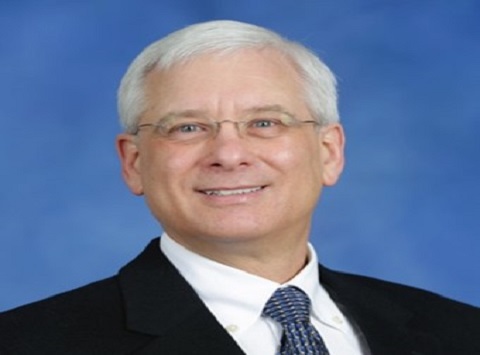
Jeffrey J Weimer
Associate Professor, Chemistry / Chemical & Materials Engineering, University of Alabama in Huntsville - United States
Dr. Weimer obtained his BS (Chemical Engineering) from the Pennsylvania State University and his PhD (Chemical Engineering) from the Massachusetts Institute of Technology. He pursued a post-doctorate in surface physics at the TU-München, worked in the Laboratory for Surface Science & Technology at the University of Maine, and was a research fellow at the Fritz-Haber Institute in Berlin. He currently lectures in physical chemistry, chemical engineering transport processes, and materials science. His research interests are in functionalizing surfaces, creating well-structured films of nanoparticles using Langmuir deposition methods, and characterizing surface chemistry or structure with spectroscopies and scanning probe microscopy. He has published works on the interactions between molecules adsorbed on metals, x-ray photoelectron spectroscopy, the nature of bio-coating surfaces, silanization of metals or glasses, and Langmuir methods to prepare nanoparticle films.
Quantum dots are nanoparticles (NPs) with unique optoelectronic properties. They can be coated on solar cells or light-emitting diodes to enhance device performance. Common approaches include brush, dip, spin, or spray coating. While technologically simple to do, these methods lack precision or accuracy on macro and micro uniformity in the plane and through the thickness of the film. Numerous reports have also shown Langmuir films of NPs formed on a liquid sub-phase and templated onto solid surfaces using Langmuir-Blodgett or Langmuir-Schaefer methods. The studies have only sparingly documented the deposition conditions and have failed to demonstrate consistent, robust films over macro-scale areas, especially without needing to post-compress the Langmuir film before coating it. We suggest this is a primary reason why Langmuir deposition is not recognized as a technology to coat NPs even though the technique should in principle give exceptional control on film quality.
After reviewing the above, we give an overview on how Langmuir films of NPs spread as a function of initial deposition condition such as concentration, volume, and touch or drop method. We then present results from two significant break-throughs in approach. One is to control the spreading rate of the Langmuir film. Slowing the initial spreading rate leads to Langmuir films that do not form coffee-ring patterns, with area packing densities near the theoretical maximum as determined by the size of the NPs. The second approach is to pre-define the area for the Langmuir film to spread. Constraining the deposition area induces spontaneously self-assembled, uniform Langmuir monolayers of NPs. Qualitative and quantitative results suggest how the two new approaches could be used to overcome the limitations to adopting Langmuir deposition of NPs routinely in future technological applications.
Keynote Speaker

Anupama B. Kaul
Professor, Department of Materials Science and Engineering; PACCAR Technology Institute; Department of Electrical Engineering, University of North Texas, USA
Dr. Anupama B. Kaul is the PACCAR Professor of Engineering at the University of North Texas (UNT) and serves as Director of the Nanoscale Materials and Devices Laboratory and the PACCAR Technology Institute. Her funded research as PI and/or Co-PI has originated through the support of agencies such as the ONR, AFOSR, ARO, NSF, NRO and NASA, as well as industry. Prior to UNT, Dr. Kaul was Associate Dean for Research and Graduate Studies in the College of Engineering and held the AT&T Distinguished Professorship in ECE at the University of Texas, El Paso. Dr. Kaul has served as a Program Director at NSF in the ECCS Division, where she was on rotation as an IPA from JPL, Caltech. She serves on the External Advisory Board of Penn State University’s Two-dimensional (2D) Crystal Consortium (2DCC) – MIP. She was also Chair and PI of the NSF US EU Workshop on 2D Layered Materials and Devices held in 2015 with the European Union (EU) Graphene Flagship Program. Dr. Kaul is the recipient of the NSF’s Director’s Award for Program Management Excellence, the NASA Service Award, a NASA Team Technical Accomplishment Award, multiple NASA Patent Awards and numerous NASA Technology Brief Awards for her research. She was selected to be a participant at the US National Academy of Engineering (NAE) 2012 Frontiers of Engineering (FOE) Symposium, and in 2014 she was invited to participate in the bi-lateral Indo-US FOE, also organized by the US NAE. She currently serves on the Editorial Board of a number of journals and is a Fellow of the class of 2016 ELATE’s executive leadership development program (Drexel University). Dr. Kaul obtained her M.S. and Ph.D. from the University of California, Berkeley in MSE with minors in ECE and Physics where she was advised by Professor Theodore Van Duzer (ECE), an NAE member, and Professor Timothy D. Sands (co-advisor, MSE) who is the current President of Virginia Tech.
Two-dimensional (2D) layered materials range in composition from mono-elemental systems such as graphene and black phosphorus, binary transition-metal dichalcogenides (TMDCs) such as WSe2, as well as multi-component organo-halide perovskites. Despite the varying compositions, their unifying feature arises from the weak van der Waals (vdW) interaction that serves as the glue between adjacent layers. In this study, halide-assisted- (HA-) low-pressure- (LP-) chemical vapor deposition (CVD) synthesis of monolayer (1L) WSe2 with average size ranging from 10-25 µm is reported, where the use of NaCl helps to reduce the growth temperature T of WSe2 to as low as ~ 750oC, unlike conventional CVD where synthesis T’s are typically much higher. The T-dependent photoluminescence spectra for 1L WSe2 reveals localized excitons and trions vanish for T > 98 K and T > 273 K, respectively, while the exciton population starts decreasing only above 348 K due to the increased electron-phonon interaction at higher T. The phonon lifetime τ was found to be higher for WSe2 synthesized on sapphire (τ ~ 0.98 ps), compared to WSe2 grown on SiO2/Si (τ ~ 0.76 ps). Finally, a 1L WSe2-based photodetector (PD) was fabricated with Al contacts from which photoresponsivity ℛ of ~ 502 AW-1 and ~ 736 AW-1 was obtained for PDs fabricated on Al/WSe2/SiO2/Si and Al/WSe2/sapphire, respectively. The detectivity D * was found to be ~ 7.85×1010 Jones and ~ 1.89 ×1011 Jones for PDs on Al/WSe2/SiO2/Si and Al/WSe2/sapphire, respectively, while the external quantum efficiency EQE was calculated to be ~ 2.74×101 -4.02×103 % (Al/WSe2/SiO2/Si) and ~ 3.24×101 -6.55×103 % (Al/WSe2/sapphire), respectively. The interface trap density
Keynote Speaker
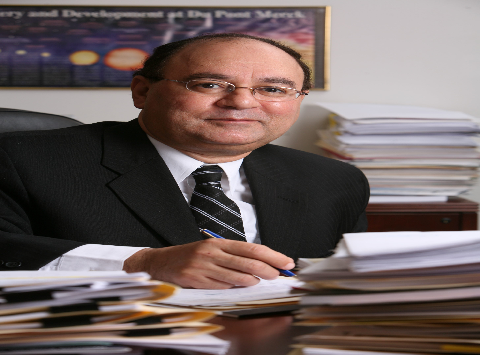
Shaker A. Mousa
Professor of Pharmacology, Executive Vice President, Chairman, The Pharmaceutical research Institute, ACPHS - United States
Dr. Mousa is a tenured professor of Pharmacology at Albany College of Pharmacy, founder, executive VP and chair of PRI at Albany, NY. Dr. Mousa is founder of several spin-off Pharmaceutical and biotechnology companies focusing on the treatment of various blood, vascular disorders, hematological and Oncological diseases. He held a senior scientist and a research fellow at DuPont Pharmaceuticals and DuPont Merck for two decades. Awarded the 2017 Kuwait Foundation for Advancement in Sciences (KFAS) Laureate for Applied Sciences in Medicine. Elected and inducted in 2018, a fellow of the National Academy of Inventors (FNAI). In 2020, Dr. Mousa ranked by Stanford ranking to be among the top 1% of globally impactful scientist. His current googles scholar citation ~32,000; h-index 90; and i10-Index 500. Dr. Mousa’s work reported in over 1,000 peer-reviewed publications and holds over 400 US & International Patents. Dr. Mousa has contributed to the discovery and development of many FDA approved products and clinical candidates.
Over the past decade, evidence from the scientific and medical communities has demonstrated that nanobiotechnology and nanomedicine have tremendous potential to affect numerous aspects of cancer and other disorders in term of early diagnosis and targeted therapy. The utilization of nanotechnology for the development of new Nano-carrier systems has the potential to offer improved targeted delivery through increased solubility and sustained retention and more importantly active targeting. One of the major advantages of this innovative technology is its unique multifunctional characteristics. Targeted delivery of drug incorporated nanoparticles, through conjugation of site-specific cell surface markers, such as tumor-specific antibodies or ligands, which can enhance the efficacy of the anticancer drug and reduce the side effects. Additionally, multifunctional characteristics of the Nano-carrier system would allow for simultaneous imaging of tumor mass, targeted drug delivery and monitoring. A summary of recent progress in nanotechnology as it relates to nanoparticles and drug delivery will be reviewed. Nano Nutraceuticals using combination of various natural products provide a great potential in diseases prevention. Additionally, various Nanomedicine approaches for the detection and treatment of various types of organ specific delivery, vascular targeting, and vaccine will be briefly discussed.
Reference: Mousa SA, et al: (Editors): The Road from Nanomedicine to Precision Medicine, Jenny Stanford Publishing (2020) – 1200+ pages, 36 chapters [ISBN 978-981-4800-59-4 (Hardcover), 978-0-429-29501-0 (eBook)].
Keynote Speaker

Nigel Davies
Principal Scientist in Advanced Drug Delivery, Pharmaceutical Sciences, R&D, AstraZeneca, Sweden
On joining AstraZeneca in 2008, Nigel had “CMC” responsibilities for a number of projects spanning Phase 1 to life-cycle management, having particular involvement in bioequivalence/biowaiver strategies and regulatory submissions for several now approved products including Vimovo, Nexium OTC, Kombi/Komboglyze, Forxiga, Xigduo/Xigduo XR and QTERN..
Since transitioning to the Advanced Drug Delivery group in the Innovative Medicine Early Development function in 2014, Nigel has pioneered AstraZeneca’s efforts into the delivery of mRNA therapeutics as well as oral delivery of macromolecules resulting in a number of assets progressing from early pre-clinical evaluation to clinical testing.
Before joining AstraZeneca, Nigel had almost 20 years tenure in academia at Universities in New Zealand and Australia leading research groups focusing on developing novel delivery systems for macromolecules. Over the years in academia, Nigel secured >US$2.5 million in competitive research grants (as principle or co-investigator), supervised (to completion) 19 post-graduate students and authored/co-authored 2 book chapters and >70 peer-reviewed journal articles.
Nigel strives to combine his research and drug development experience to identify and develop novel systems and strategies (both internal and via external collaborations) to overcome the challenges associated with the delivery of macromolecules in order to advance AstraZeneca’s New Modalities portfolio.
Subcutaneous administration opens the possibility of patient self-administration that could enable mRNA to be used in chronic treatments for protein replacement or regenerative therapies. In this work, we demonstrate that subcutaneous administration of mRNA formulated within LNPs results in measurable plasma exposure of a secreted protein, albeit with dose-limiting local inflammatory responses. To overcome this limitation, we investigated the concept of incorporating aliphatic ester prodrugs of anti-inflammatory steroids within LNPs i.e. functionalized LNPs to suppress the inflammatory response. We show that the effectiveness of this approach depends on the alkyl chain length of the ester prodrug which determines its retention at the site of administration. An unexpected additional benefit to this approach is the prolongation observed in duration of protein expression. Our results demonstrate that subcutaneous administration of mRNA formulated in functionalized LNPs is a viable approach to achieving systemic levels of therapeutic proteins, which has the added benefits of being amenable to self-administration when chronic treatment is required.
Keynote Speaker
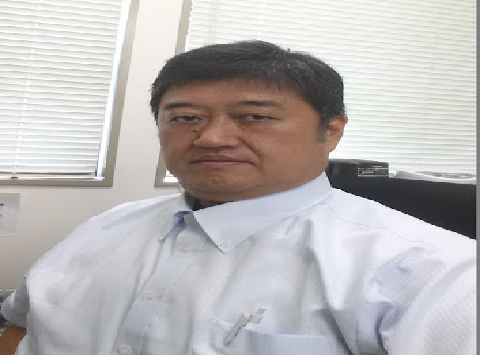
Koichi Okamoto
Professor, Department of Physics and Electronics, Osaka Prefecture University, Japan
Prof. Okamoto received his Ph.D. degree from the Department of Chemistry, Kyoto University, Kyoto, Japan, in 1998. From 1998–2000, he was a Researcher at the Venture Business Laboratory of Kyoto University. From1998–2000, he was a Research Fellow of the Japan Society for the Promotion of Science (JSPS). From 2001–2005, he was a Postdoctoral Scholar of Electrical Engineering at California Institute of Technology, where he was a Senior Research Fellow of Physics from 2005 to 2007. From 2007–2011, he was a Research Associate Professor of Electronic Science and Engineering at Kyoto University. From 2011–2018, he was an Associate Professor of Institute for Materials Chemistry and Engineering at Kyushu University. Since 2018, he is a Professor of Department of Physics and Electronics at Osaka Prefecture University. His current research interests include developing new optical materials and devices based on nanophotonics and plasmonics. (Up to 100-150 words)
We propose a plasmonic metamaterials based on random metallic nanostructures on mirror to tune the optical properties due to the surface plasmon (SP) resonance in a flexible manner. By using nano-hemisphere on mirror (NHoM) structure, the SP resonance peak was split into two peaks owing to the strong coupling between the SP mode in the metal nanohemisphere and the mirror image mode generated in the metal substrate. This phenomenon is based on the fact that the strong coupling and the induced electromagnetic effects are similar to those pertaining to the Rabi splitting, Fano resonance, and electromagnetically induced transparency, thus providing quantum effect analogies. These phenomena have recently attracted increased attention and have been studied with nanocavities fabricated with top-down nanotechnologies. Compared with previous reports, NHoM structures can be fabricated in a much easier manner and are tunable in rather wider wavelength regions without nanofabrication technologies. The SP resonance peaks were enhanced, sharpened dramatically, and tuned flexibly, based on the optimization of the thickness of the spacer layer between the metal hemisphere and metal substrate. We verified both experimentally and numerically that the NHoM structure is capable of tuning the LSPR over a wide wavelength range from deep UV to near IR. The NHoM nanocavity structure has a quality factor >200 that is surprisingly high for the localized SP mode of nanoparticles. Our proposed novel plasmonic metamaterials based on random structures have the potential to dramatically advance conventional optical technologies, such as ultra-efficient energy devices, threshold-free nano-lasers, ultra-high-resolution imaging, ultra-high-resolution nano-fabrication, ultra-sensitive sensing, ultra-high-density memory, and ultra-highly integrated nano-optical circuits. (up to 300 words)
Speaker

Dmitri Simberg
Associate Professor, Colorado Center for Nanomedicine and Nanosafety Co-Director, Department of Pharmaceutical Sciences, University of Colorado Anschutz Medical Campus, United States
Dr. Simberg received his Ph.D. in Biochemistry at the Hebrew University of Jerusalem, Israel. His thesis in the laboratory of Dr. Chezy Barenholz was on biochemical and biophysical mechanisms of lipofection using cationic lipids in vitro and in vivo. He did a 2-year postdoctoral study on tumor targeting of iron oxide nanoparticles in the laboratory of Dr. Erkki Ruoslahti at the Burnham Institute, La Jolla in California, and a 1-year postdoctoral research at the Department of Radiology, University of California San Diego. In 2013, Dr. Simberg joined the faculty of the Skaggs School of Pharmacy, University of Colorado. Dr. Simberg is the corresponding author or coauthor of over 75 research papers, reviews, perspectives and book chapters, and his research has been continuosly funded by the National Institutes of Health. His current research interests are focused on the development of nanoparticles and cells for drug delivery and imaging, mechanisms of complement activation by nanomedicines, and mechanisms of accumulation of nano carriers in the skin and tumors.
Skin is the largest organ in the body with important immune functions, PEGylated liposomal doxorubicin (PLD) induces serious skin toxicity in the palms and feet called palmar-plantar erythrodysesthesia (PPE). There has been little research into the mechanisms of skin accumulation of liposomes. We studied the dynamics of accumulation of fluorescent liposomes and PLD in the mouse skin. The liposomes were injected i.v. in mice, and the accumulation was studied by longitudinal fiber optical near-infrared spectroscopy, ex vivo imaging and confocal microscopy. Non-PEGylated liposomes showed short circulation and aggregation in the blood, with some aggregates lodging in microvasculature soon after the injection. PEGylated liposomes showed long circulation and no aggregation. PEGylated liposomes started to accumulate in the skin as soon as 5 min after the injection. Within 1 h post-injection, PEGylated liposomes were widespread in extravascular space in the dermis and sub-dermis. Liposomes were present in the skin for at least 7 days. There was enhanced extravasation in the areas of pressure (foot pads). High resolution imaging showed that liposomes up to 500 nm size extravasated intact, likely through gaps in the vasculature. Following extravasation, fluorescent lipids exhibited migration and spreading, whereas doxorubicin mostly accumulated in cell nuclei. Dendritic cells, endothelium, CD45+ immune cells and fibroblasts were found to be positive in the dermis. Also, all liposomal components efficiently accumulated in sweat glands, which alludes to the PPE pathology following injection of PLD. This research shows that liposomes quickly extravasate and migrate in the skin, in particular in the areas of pressure. Further understanding of the mechanisms of this important phenomenon can improve the safety of liposomal nanocarriers.
Speaker
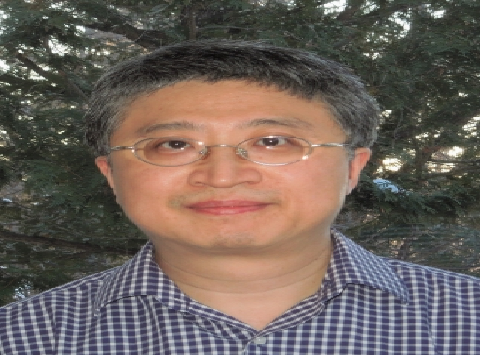
Jifeng Liu,
Associate Professor, Thayer School of Engineering, Dartmouth College - United States
Dr. Jifeng Liu received the B.S. and M. S. degrees in materials science and engineering from Tsinghua University, Beijing, China, and the Ph.D. degree in materials science and engineering from the Massachusetts Institute of Technology. He is currently an Associate Professor and the Materials Science and Engineering Program Lead at the Thayer School of Engineering, Dartmouth College. His major research field is photonic materials and devices, including integrated photonics for ultralow energy photonic datalinks as well as nanomaterials and nanostructures for photodetectors, image sensors, modulators and solar energy harvesting. He has authored or coauthored more than 90 peer-reviewed journal papers, more than 60 conferences papers, and six book chapters, which have been cited over 11,000 times according to Google Scholar. Dr. Liu has also been granted 15 U.S. patents related to nanophotonic materials and devices. He is a recipient of NSF CAREER Award, a Fellow of the Optical Society of America (OSA), and a Senior Member of the Institute of Electrical and Electronics Engineers (IEEE).
The optical conductivity of some 2D materials, such as single layer graphene (SLG) and magic angle graphene (MAG), can be significantly and reversibly modified when the Fermi level is tuned by electrical gating. Depending on the tunable spectral regime, these interesting properties can potentially lead to tunable 2D photonic surfaces for a variety of applications, including variable optical attenuators, light detection and ranging (LiDAR) systems, and even ultrathin flexible display. However, while SLG has been investigated for waveguide-integrated modulators based on this property, so far it has rarely been applied to free-space 2D photonic devices because the surface-incident absolute absorption of graphene is limited to 1-2%. No significant change in either reflectance or transmittance would be observed even if SLG is made transparent upon gating. To achieve significantly light-matter interaction under surface-incident free-space optics, we embed SLG in an optical slot-antenna cavity (SAC) framework, simultaneously enhancing SLG absorption by up to 20x and potentially enabling electrical gating of SLG as a step towards electrically tunable 2D photonic surfaces. This framework synergistically integrates near-field enhancement induced by ultrahigh refractive index semimetal slot-antenna with broadband resonances in visible and infrared regimes, ~3x more effective than a vertical cavity structure alone. An example of this framework consists of self-assembled, close-packed Sn nanodots separated by ~10 nm nanogaps on a SLG/SiO2/Al stack, which dramatically increases SLG optical absorption to 10-25% at λ=600-1900 nm. The enhanced SLG absorption spectrum can also be controlled by the insulator thickness. For example, SLG embedded in this framework with a 150 nm-thick SiO2 insulating layer displays a distinctive red color in contrast to its surrounding regions without SLG on the same sample under white light illumination. When incorporating MAG into the optical SAC structure, a large extinction raito of ~7 dB can be achieved in the near infrared regime upon gating at a low insertion loss of <0.7 dB. This investigation opens a potential path towards tunable 2D photonic surfaces across a broad spectral regime
Speaker
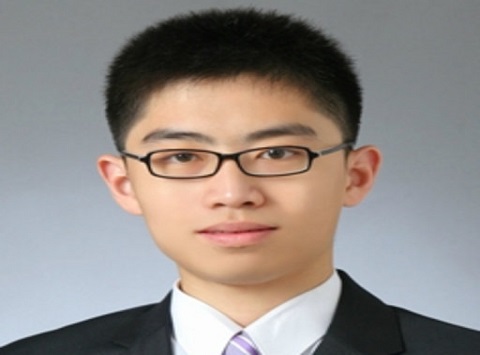
Huamin Li
Assistant Professor, Department of Electrical Engineering, University at Buffalo, The State University of New York - United States
Dr. Huamin Li is an Assistant Professor in Department of Electrical Engineering, the University at Buffalo. He is an IEEE Senior Member and Editorial Board Member of IEEE Access and Nano Express. His expertise lies in 2D nanomaterials engineering and their nanoelectronic applications.
2D semiconductors such as monolayer molybdenum disulfide (MoS2) are promising material candidates for next-generation nanoelectronics. However, there are fundamental challenges related to their metal–semiconductor (MS) contacts, which limit the performance potential for practical device applications. In our recent work, 2D monolayer hexagonal boron nitride (h-BN) is exploited as an ultrathin decorating layer to form a metal–insulator–semiconductor (MIS) contact, and an innovative device architecture is designed as a platform to reveal a novel diode-like selective enhancement of the carrier transport through the MIS contact. The contact resistance is significantly reduced when the electrons are transported from the semiconductor to the metal, but is barely affected when the electrons are transported oppositely. A concept of carrier collection barrier is proposed to interpret this intriguing phenomenon as well as a negative Schottky barrier height obtained from temperature-dependent measurements, and the critical role of the collection barrier at the drain end is shown for the overall transistor performance.
Speaker

Hon Fai CHAN
Assistant Professor, Chinese University of Hong Kong - Hong Kong
Prof. CHAN Hon Fai is an Assistant Professor at the Institute for Tissue Engineering and Regenerative Medicine and School of Biomedical Sciences at The Chinese University of Hong Kong (CUHK). He received his B.Eng. from The University of Hong Kong. He then pursued his M.S. and Ph.D. degree at Duke University. During his Ph.D. training, he focused on developing several microfluidic technologies to perform 3D spheroid culture of mesenchymal stem cells and hepatocytes, and investigated the effect of supplementing extracellular matrix cues on spheroid functions. In 2016, Hon Fai joined Massachusetts Institute of Technology as a postdoctoral associate. There he conducted organ-on-a-chip research and develop biomechanics-guided folded hydrogel to recapitulate morphogenesis of mucosal folding which is observed in many hollow or tubular organs in human body.
Inflammatory response is a critical stage in typical wound healing. Although studies have reported that some bioactive materials can modulate the polarization of macrophages to benefit tissue regeneration, the roles of the inflammatory responses, especially the crucial roles of macrophages, in tissue regeneration stimulated by biomaterials remains unclear. Bioactive glass (BG) and hydrogel containing BG have been reported to be able to promote both hard and soft tissue regeneration. However, the critical roles of macrophages in tissue regeneration enhanced by BG have not been fully elucidated. In this study, the effects of BG/sodium alginate (SA) hydrogel (BG/SA hydrogel) on the behaviors of macrophages as well as on the interactions between macrophages and repairing cells were investigated. In addition, macrophage-depleted mice were used to investigate the necessity of macrophages in the regeneration of full-thickness skin wounds treated with BG/SA hydrogel. Our results indicated that BG/SA hydrogel could polarize macrophages towards M2 phenotype in vitro and in vivo and upregulate the expression of anti-inflammatory genes. In addition, the M2 polarized macrophages could further recruit fibroblasts and endothelial cells as well as enhance the extracellular matrix (ECM) synthesis of fibroblasts and vascularization of endothelial cells in vitro and in vivo. Depletion of macrophages in the wound sites impeded the recruitment of repairing cells and reduced the formation of blood vessels and ECM, slowing down skin regeneration. These results provide an insight into the biomaterial-immune system interactions and demonstrate that modulation of macrophages by BG/SA hydrogel in the inflammatory response is crucial in skin regeneration enhanced by the hydrogel.
Speaker

Faith H N Howard
Postdoctoral Research Associate, Department of Oncology and Metabolism, Mellanby Centre for Bone Research, University of Sheffield- United Kingdom
Dr. Howard obtained her BSc (Hons) in Biology from the University of Manchester, UK and her PhD (Nephrology) from the University of Sheffield, UK. Her PhD research was focused on cyclin-dependent kinase inhibitors for the treatment of chronic kidney disease. She has previously worked in the biotech industry for the development of novel vaccines and contract research in the AMR field. She currently lectures invasive surgery techniques for Home Office Licensing at the University of Sheffield. Her areas of interest are therapeutic nanocarriers and complementary delivery strategies to improve systemic circulatory longevity and targeted delivery to disseminated neoplasms. She has published various papers in peer reviewed journals.
Nanotechnology is paving the way for new carrier systems designed to overcome the greatest challenges to the success of oncolytic virotherapy following their systemic administration, specifically; neutralisation, sequestration and cell entry. Until recently, a biologically derived alternative to metallic particles, namely magnetosomes, has been relatively overlooked presumably due to the challenges associated with their biomanufacture. They possess many advantages including a narrow size and shape distribution and a biologically compatible surface chemistry, which prevents aggregation and provides an anchor for functional groups for biotechnology applications. Medical applications in oncology have so far utilised the magnetic properties of magnetosomes for MRI contrast agents and magnetic hyperthermia. Here we demonstrated their nanocarrier capabilities by co-assembly with herpes simplex virus (HSV1716) for the treatment of mammary carcinoma. Magnetosomes enabled tumour targeting from the circulation with magnetic guidance, protected the OV against neutralising antibodies and thereby enhanced viral replication within tumours. This approach was associated with a significant increase in the recruitment/activation of cytotoxic T cells and reprograming of the tumour microenvironment towards a pro-inflammatory phenotype resulting in significant tumour shrinkage and increased survival in a syngeneic mouse model of breast cancer by 50%. Exploiting the properties of such a versatile nanocarrier offers an exciting, novel approach for active tumour targeting to disseminated neoplasms.
Speaker

Yaqiao Wu
Research Professor, Boise State University/Center for Advanced Energy Studies - United States
Dr. Yaqiao Wu is a Research Professor in the Micron School of Materials Science & Engineering at Boise State University (BSU) and the Center for Advanced Energy Studies (CAES). He is the Director of the Microscopy and Characterization Suite (MaCS) at CAES. He received his Ph.D. degree at Institute of Metal Research, Chinese Academy of Sciences in 2000 (joint-trained at National Institute of Materials Science, Japan). Before joined BSU, Dr. Wu was with the Ames Laboratory of USDOE. Dr. Wu’s expertise is in nanoscale structural and chemistry characterization achieved by the combination of transmission electron microscopy (TEM) and atom probe tomography (APT) techniques, to establish critical connections between structure, chemistry and behavior at nanometric to atomic level. He has studied a large range of various material systems from nanostructured magnetic materials, semiconductors, ceramics, quasicrystals and nuclear materials. He has authored or coauthored more than 100 papers in peer-reviewed journals.
Nanostructured oxide dispersion strengthened (ODS) ferritic alloys are one of the most promising structural materials for the next-generation nuclear energy systems (e.g., Generation IV fast reactors), as the candidate cladding materials. Compared with conventional ferritic and ferriticmartensitic alloys, the ODS alloys show excellent resistance to irradiation damage and high-temperature creep as well as superior mechanical properties. A high number density of nanometer-sized oxide precipitates forms in the ODS alloys as pinning sites to inhibit both dislocation movement and grain growth, and as sink sites at the phase interfaces for radiation damage, contributing to the unique alloy properties. Therefore, it is important to understand the formation and behavior of these nanoscale oxide precipitates for further improving the alloy’s performance and even for designing new high-performance alloy systems. This presentation gives a review of the recent studies on investigating the nanosized oxides in ODS alloys by combinational transmission electron microscopy (TEM) and atom probe tomography (APT) techniques at the Microscopy and Characterization Suite (MaCS), Center for Advanced Energy Studies (CAES).
Speaker

Ignacio Mínguez-Bacho
Postdoctoral Researcher, Department of Chemistry and Pharmacy, University Erlangen-Nürnberg– Germany
Dr. Ignacio Mínguez Bacho obtained his Ph. D. in physics from the Universidad Autónoma de Madrid in 2012 working at the Instituto de Ciencia de Materiales de Madrid (ICMM, Spain) on nanostructured systems. He then performed postdoctoral research on hybrid solar cells at Nanyang Technological University (Singapore) and now applies his expertise in nanostructuring semiconductors to photovoltaics at Friedrich Alexander University Erlangen-Nürnberg. He has secured independent funding from the FAU’s Emerging Talents Initiative and the European Commission’s Marie Skłodowska-Curie Actions. His areas of interest are antimony chalcogenides and nanostructured materials applied in energy conversion technologies.
Traditional thin-film solar cells have gathered the conditions to form part of the commercial photovoltaic market. However, these thin-film technologies are based on scarce, toxic materials, that hinder further deployment in the market. Therefore, there is an urge to find sustainable solar energy harvesting systems. Sb2S3 is an example of alternative materials that are abundant, inexpensive and non- low-toxic fulfill the requirements for a potential mass deployment and commercialization. However, parameters such as charge carrier lifetimes or diffusion lengths in these materials related to emerging PV are still far from those used in mainstream technologies. Nanostructuring of these materials plays a crucial role for the optimization of the solar cells. Mesoporous layers are the most prominent examples of nanostructured substrates. However, intrinsic restrictions of the mesoporous nanostructured substrates hinder the identification of limiting factors. In this webinar, I am going to present a series of approaches to fabricate ultrathin Sb2S3 based solar cells on nanostructures with highly tunable geometries. To fabricate solar cells we exploit atomic layer deposition to take advantage of the conformality of the layers and uniform thickness deposition and form planar, coaxial and concentric heterojunctions, displaying efficiencies above 5 %.
Speaker
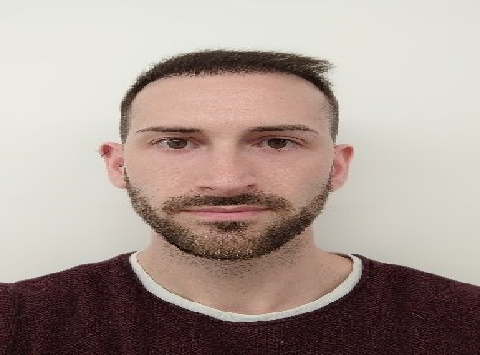
Ugutz Unzueta
Senior Researcher, Biomedical Research Institute Sant Pau, IIB Sant Pau– Spain
Dr. Unzueta obtained his PhD on Biotechnology from the Autonomous University of Barcelona (UAB) in 2013. He is currently a senior researcher at Sant Pau Biomedical Research Institute in Barcelona and an associated professor at the department of Genetics and Microbiology at UAB. He is also member of the Spanish network on Nanomedicine CIBER-BBN. His current research interest is based on the design and generation of self-assembling protein nanomaterials and their biomedical applications in targeted nanomedicines of cancer. He has published more than 70 articles in the field.
Nanomedicine seeks for non-toxic biomaterials able to address unmet clinical need in precision medicines. In this sense, nanostructured protein materials show appealing biomedical applications not only because of their high biocompatibility and biodegradability, but also, since both their structure and function can be genetically programmed. In particular, we present here how the rational use of divalent cations combined with simple protein engineering allows the generation of architectonically stable and multivalent protein nanoparticles with excellent properties for targeted drug delivery. For that, the controlled addition of divalent metal and non-metal cations such as Ni2+, Cu2+, Ca2+ and Zn2+ has been described to induce the self-assembling of histidine-tagged protein building blocks through the generation of defined cross-molecular interactions between the histidine imidazole rings. In this regard, the additional incorporation of selective tumor-homing peptides into the protein building bock allows the multivalent presentation of the targeting moiety conferring tumor super-selectivity. Based in this technology, we have successfully generated different tumor-targeted multivalent nanoparticles, bearing the tumor-homing peptide T22, that shows excellent biodistribution to CXCR4 overexpressing cancer stem cells upon intravenous injection into solid (colorectal cancer) or hematologic (leukemia and lymphoma) tumor mice models. Then, the repetitive administration of genotoxic drug-carrying nanoconjugates has efficiently induced the selective depletion of CXCR4+ target tumor cells and the consequent regression of the tumor progression and metastasis in absence of systemic toxicity. Therefore, the stoichiometric manipulation of divalent cations for the nano-biochemical manipulation of protein materials structure is a very powerful tool for the generation of novel and innovative smart nanomedicines.
Speaker

Gaurav Giri
Professor, Department of Chemical Engineering, University of Virginia - United States
Prof. Giri graduated with a B.S. in Chemical Engineering from Caltech in 2008, and was awarded a Ph.D. in Chemical Engineering in 2013 from Stanford University, working on the crystallization control of organic semiconductors for flexible electronic applications. His postdoctoral work at the Massachusetts Institute of Technology focused on the use of microfluidics and continuous flow processing for pharmaceutical industry. He has been a professor in the Department of Chemical Engineering at the University of Virginia since 2016, where his research group is focused on studying the fundamental processes behind organic molecule and metal organic framework thin film crystallization, and related applications. His current work focuses on the use of MOFs for air filters, catalysts, separation membranes and for drug delivery applications, as well as pharmaceutical molecules and organic electronics.
Porous coordination polymers, including metal-organic frameworks, hold incredible potential to impact numerous technologies. The wide breath of applications include charge and ion transport membranes, separation membranes, hydrogen and natural gas storage, drug delivery, sensors, ‘self-cleaning’ surfaces, etc. However, the current technological impact of these materials is muted due to the lack of understanding of fundamental theories behind MOF crystallization and thin film formation. Many potential applications require MOFs to be created as thin films, such as membranes for batteries and fuel cells, separation membranes etc., since increased thickness creates barriers to mass and charge transfer. We will show that the investigation of MOF crystallization, guided by a combination of chemistry, fluid dynamics, and crystallization theories, will allow us to discover new design rules to create rapid, uniform and high quality thin films. The proposed hypothesis of reaction-crystallization indicates that both various steps of MOF formation can be controlled by treating the individual steps as a mix of reaction or crystallization steps, and separately controlled. These design rules are affected by nanoconfinement strategies, much like single component materials. Finally, the applicability of MOF thin films for various applications will be discussed.
Speaker
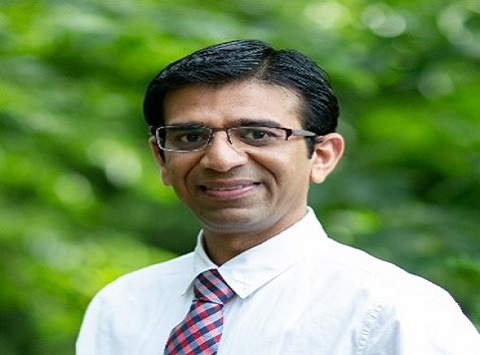
Nikunjkumar R. Visaveliya
Post-Doctoral Researcher, Department of Chemistry and Biochemistry, The City College of The City University of New York - United States
Dr. Nikunjkumar R. Visaveliya studied Chemistry at Sardar Patel University in India. He obtained his doctoral degree from the Technical University of Ilmenau, Germany where he performed research on microfluidic syntheses of multifunctional polymer and composite nano/microparticles for sensing and labeling applications. Currently, he is a postdoctoral researcher at the City College of New York, USA. His research interests are microfluidics and interfacial/functional nanomaterials for biomedical, energy, catalysis, sensing, and labeling applications.
Fluorogenic labeling strategies are emerged as powerful tools for in vivo and in vitro imaging applications for diagnostic and theranostic purposes. Free organic chromophores (fluorescent dyes) are bright but rapidly degrade. Inorganic nanoparticles (e.g., quantum dots) are photostable but toxic to biological systems. Alternatively, dye-doped polymer particles are promising for labeling and imaging due to their properties that overcome limitations of photodegradation and toxicity. Polymer particles are relatively soft compared to inorganic nanoparticles and can be synthesized with characteristics like biocompatibility and stimuli-responsiveness. Also, their ability of loading fluorophores through various interactions reveals brightness. Various microfluidic supported strategies were applied where fluorophores can be linked to polymeric networks non-covalently and covalently in the interior, and at the surface of nanoparticles. Besides, microfluidic strategies for hydrophilic and hydrophobic fluorescent polymer microparticles were performed for systematic tuning in size and color combination. Furthermore, soft and bright particulate assemblies were enabled through interfacial interactions at the intermediate scale between the nanometer and micrometer lengthscale. On the other side, surface-enhanced Raman scattering (SERS) is one of the most powerful analytical techniques for the identification of molecules. The substrate, on which SERS is dependent, contains regions of nanoscale gaps (hotspots) that hold the ability to concentrate incident electromagnetic fields and effectively amplify vibrational scattering signals of adsorbed analytes. While surface plasmon resonance from metal nanostructures is a central focus for the SERS effect, the support of polymers can enormously advantageous to provide larger exposure of structured metal surfaces for efficient interactions with analytes. Characteristics of the polymer particles such as softness, flexibility, swellability, porosity, transparency, metal-loading ability, and high surface area can allow diffusion of analytes and penetration of light deeply that can enormously amplify sensing outcomes. Furthermore, metal-catalyzed metal enforcement approaches initiated for achieving a ligand-free metal surface for direct analyte interactions, and experimental demonstration of sequential SERS analysis of multiple analytes through microfluidics has been established.
Speaker

Sabiha Fatima
Associate Professor, College of Applied Medical Sciences, King Saud University - Saudi Arabia
Dr. Sabiha Fatima obtained her MSc (Biochemistry) and PhD (Biochemistry) from Aligarh Muslim University, India. She is currently working as an Associate Professor in the college of Applied Medical Sciences, King Saud University, Riyadh, Saudi Arabia. Her research work encompasses the toxicity assessments of environmental chemicals, and anticancer drug with special emphasis on the molecular mechanism and signaling pathways involved in cell death. Her current research interest focuses on the use of nanoparticle in the field of biomedical research and to understand its role on the cellular and molecular mechanism in treating diseases.
The use of an effective osteoconducive nanomaterial in bone tissue engineering has drawn wide attention. Unique physiochemical properties of nanoparticles (NPs) correlate with their potential to generate reactive oxygen species (ROS) which plays a major role in governing the fate of human mesenchymal stem cells (hMSCs) differentiation to osteoblasts. Tissue regeneration–based studies have reported that the most transplanted MSCs undergo oxidative stress (OS) due to excessive ROS generated by either host tissues or the MSCs themselves. Selenium nanoparticles (SeNPs), an antioxidant with pleiotropic pharmacological activity supports bone formation. Considering the importance of redox homeostasis in the regulation of cell fate, the understanding of molecular mechanisms involved in hMSC–SeNP interaction to promote osteogenesis will provide new insights for SeNPs mediated bone tissue engineering. We observed that lower concentration of SeNPs promoted cell viability and induced MSC’s differentiation toward an osteogenic over an adipogenic lineage. By preventing excessive ROS accumulation, SeNPs increased antioxidant levels in hMSCs undergoing osteogenesis compared to untreated cells. In addition, SeNPs significantly up-regulated the gene and protein expression of phosphorylated c-Jun N-terminal kinase (JNK) and FOXO3a, with no significant change in the expression levels of extracellular signal-related kinase (ERK) and p38 MAPK. The results of our study indicated that low concentrations of SeNPs by moderating the ROS level through JNK/FOXO3 pathway might enhance the cell viability and osteogenic potential of hMSCs. Hence, we conclude that SeNPs by regulating OS enhance the osteogenic potential of MSCs and thus can be used as an effective candidate for treating bone disease through cell-based therapy.
Speaker

Xiaogan Liang
Associate Professor, Mechanical Engineering, University of Michigan - United States
Dr. Xiaogan Liang is currently working as an Associate Professor at The Mechanical Engineering Department of University of Michigan (UM). Before joining UM, Dr. Liang was a Staff Scientist working at The Molecular Foundry, Lawrence Berkeley National Laboratory. His current research interests are focused on nanofabrication, nanomanufacturing and microsystem integration, nanoelectronics and optoelectronics based on low-dimensional nanostructures, biosensors, and flyer/microdrone sensors. Dr. Liang has coauthored 70 journal publications and >50 conference presentations, has given >30 invited presentations, and has 8 US patents. Dr. Liang is the recipient of NSF CAREER Award, and he is the member of Sigma Xi, IEEE, and ASME. Dr. Liang obtained a BS in Physics from Peking University, a MS in Condensed Matter Physics from Institute of Semiconductors, Chinese Academy of Sciences, and a Ph.D. in Electrical Engineering from Princeton University.
Memristors have been extensively studied as important components for constructing artificial neural networks for neuromorphic computing applications. The current memristor-based neural networks based on transition metal oxides are still mainly driven by electronic effects (e.g., voltage distributions), while ionic-interactions, as observed in biological networks, could effectively reduce the power consumption of neural networks and also result in a higher analogue computation precision. To emulate such sophisticated interactions, including synaptic competition and cooperation, ionically-coupled multi-terminal memristors are needed. Recently, memristors based on 2D semiconductors (e.g., MoS2 and WSe2) were demonstrated. Such 2D semiconductor memristors exhibit low threshold fields for initiating memristive switching and analogue switching characteristics. The memristive switching behavior of such memristors has been attributed to multiple mechanisms. One of these mechanisms is the interaction between movable ionic defects in 2D semiconductor layers and the Schottky Barriers at semiconductor/metal interfaces.4 This mechanism could be further employed to produce ionically-coupled memristors. Therefore, it is highly desirable to develop materials processing and fabrication approaches capable of generating a high areal density of movable ionic defects in 2D semiconductor layers. Here, we report that a plasma treatment can form a high density of movable S vacancies in few-layer MoS2 layers (Fig. 1 (a)). The memristors made of such plasma-treated MoS2 layers exhibit analogue pulse-programmed switching characteristics with a good linearity in switching courses. In addition, multiple such memristor channels can be ionically coupled and could be further exploited for emulating complex synaptic interactions in biological systems. This work leveraged the unique in-plane transport properties of 2D layered semiconductors for memristive electronics applications and advanced the nanofabrication capability for controlling memristive switching behaviors.
Speaker

Alae Eddine Lakraychi
Postdoctoral Fellow, University of Houston, Texas Texas- United States
Dr. Alae Eddine Lakraychi obtained his BSc (chemistry) and PhD (materials science) from the University of Picardy Jules Verne (France) under the supervision of Dr. Franck Dolhem and Dr. Matthieu Becuwe. After completing a postdoctoral fellowship at the Catholic University of Louvain (Belgium) in Dr. Alexandru Vlad’s group, he joined the University of Houston as a postdoctoral fellow in Prof. Yan Yao’s group. His current research focuses on developing innovative organic materials for energy storage and harvesting applications.
organic battery field has emerged as a credible alternative to promote efficient, safe and low-polluting electrochemical Since 2008 (a year witnessed as the modern area revival of organic electrode materials), the energy storage systems. This includes a broad applicability as bulky solid or dissolved active materials, in solid-state, aqueous or non-aqueous electrolyte, for portable and stationary batteries, respectively.1 Today, a plethora of organic molecules have been proposed and evaluated as both positive and negative electrode materials. Some of them exhibit already attractive electrochemical performances, whereas others are still under exploration and investigation.
This contribution aims at overviewing the field of organic batteries from a molecular engineering perspective. More precisely, the credible promise of organic negative electrode materials2 and the role of lithium-containing positive electrode materials to promote the rocking-chair all-organic Li-ion battery.3-6 Finally, we will present the potential synergy between solid-state electrolytes and organic electrode materials to enable energy-dense solid-state batteries with higher safety, low cost, and long-term sustainability.7
References:
1 Poizot Philippe, Joël Gaubicher, Stéven Renault, Lionel Dubois, Yanliang Liang, Yan Yao, Chem Rev. 2020, 120, 6490-6557
2 Alae Eddine Lakraychi, Franck Dolhem, Alexandru Vlad, Matthieu Becuwe, Adv. Energy Mater. 2021, 2101562
3 Alae Eddine Lakraychi, Elise Deunf, Karim Fahsi, Pablo Jimenez, Jean-Pierre Bonnet, Florence Djedaini-Pilard, Matthieu Becuwe, Philippe Poizot, Franck Dolhem, J. Mater. Chem. A. 2018, 6, 19182-19189.
4 Louis Sieuw, Alae Eddine Lakraychi, Darsi Rambabu, Koen Robeyns, Alia Jouhara, Gheorghe Borodi, Cristien Morari, Philippe Poizot, Alexandru Vlad, Chem. Mater. 2020, 32, 9996-1006.
5 Jiande Wang, Alae Eddine Lakraychi, Xuelian Liu, Louis Sieuw, Cristian Morari, Philippe Poizot, Alexandru Vlad. Nature Mat. 2021, 20, 665-673.
6 Darsi Rambabu, Alae Eddine Lakraychi, Jiande Wang, Louis Sieuw, Deepak Gupta, Petru Apostol, Géraldine Chanteux, Tom Goossens, Koen Robeyns, Alexandru Vlad. J. Am. Chem. Soc. 2021, 143, 11641-11650.
7 Lihong Zhao, Alae Eddine Lakraychi, Zhaoyang Chen, Yanliang Liang, Yan Yao, ACS Energy Lett. 2021, 6, 3287-3306
Speaker

Syed Haroon Khalid
Assistant Professor, Department of Pharmaceutics, Faculty of Pharmaceutical Sciences, Government College University Faisalabad – Pakistan
Dr. Syed Haroon Khalid has completed his PhD from Universiti Sains Malaysia, Malaysia in 2015. He is the Assistant Professor of Government College University, Faisalabad, Pakistan. He has over 60 publications and six book chapters. His publication H-index is 10. He has been serving as the external reviewer to Higher Education Commission, Pakistan and a member of American Chemical Society (ACS).
The aim was to develop a topical nanoemulgel of a BCS class II drug, Glimepiride (GLP) in both and inclusion complexed form. In our previous studies, we prepared binary and ternary inclusion complexes of GLP by physical trituration and kneading methods and found the optimized ternary inclusion of GLP with βCD and Gelucire-44/14 in the ratio of 1:4:10 %. In the present study, nanoemulsion formulations were prepared using clove oil, Tween-80 and PEG-400 following spontaneous emulsification technique and characterized for pH, conductivity, viscosity, particle size, polydispersity index and zeta potential. The gel base was developed using xanthan gum (3%) and incorporated the prepared nanoemulsion in 1:1 to devise nanoemulgels (NEGs). The prepared NEGs were further evaluated for their pH, viscosity, spreadability, drug content, ex-vivo permeation and in-vivo hypoglycemic activity. Franz diffusion cell was used for ex-vivo permeability in excised rat skin. The antidiabetic activity was performed using streptozocin induced diabetic rats against marketed glimepiride per oral medication. Nanoemulgel formulations loaded with pure and inclusion complexed presented high permeation flux in comparison to control drug solution (11.64±2.61 µg/cm2 /hr) with ICI-NEG showing the highest drug flux (70.06±6.60 µg/cm2 /hr). In-vivo studies also produced the similar results to control hyperglycemia for unto 24 hours in comparison to its oral delivery which lasted for 6 hours only. Nanoemulgel loaded with inclusion complex showed a more profound outcome in comparison to pure drug loaded formulation. In conclusion, the inclusion complexed nanoemulgel could be regarded as an effective delivery system in the treatment of diabetes hence overlaying the path for management of diabetes by topical application.
Speaker
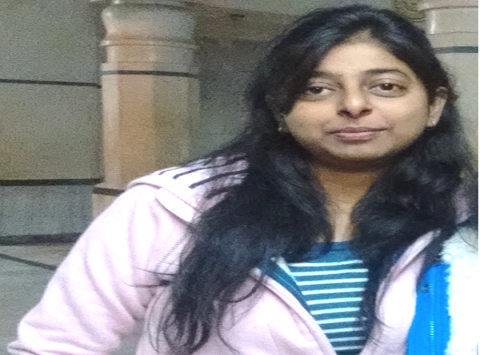
Shubhangi Shukla
Postdoctoral Research Scholar, North Carolina State University - United States
Dr. Shubhangi Shukla obtained his BSc (Chemistry) from the Isabella Thoburn College, University of Lucknow, India and his PhD (Applied Chemistry) from the Indian Institute of Technology (BHU). She previously worked as a Lecturer at an Engineering and Pharmacy College in India. His PhD research was based on the application of Palladium Nanoparticles for the electroanalytical and chemical applications in fluorescence, catalysis, hydrogen evolution. She currently works as a Postdoctoral Research Scholar, at North Carolina State University, Raleigh, NC, USA. She has published various papers in peer reviewed journals.
Ordered noble metal nanoparticles functionalized with organotrialkoxysilanes [e.g., 2-(3, 4-epoxycyclohexyl) ethyltrimethoxysilane (EETMS), 3-aminopropyltrimethoxysilane (APTMS), and 3-glycidoxypropyltrimethoxysilane (GPTMS)] were used as substrates to investigate the variation in fluorescence intensity of some well-known fluorophores (e.g., fluorescein, rhodamine, and L-tryptophan) based on distance effects and surface plasmonic activity. Anisotropic palladium nanoparticles (PdNPs), gold nanospheres (AuNPs), and silver nanospheres (AgNPs) were synthesized as a function of concentration of EETMS, APTMS, or GPTMS; the organotrialkoxysilane concentration directed the growth rate of particles along certain crystallographic facets. The reactive organic functionalities of alkoxysilanes facilitated the physisorption of probe molecules in proximity to the nanoparticles. The maximum enhancement in fluorescence intensity was observed in the case of APTMS-induced stabilization at hydrodynamic radii (RH) of ∼350 nm as a result of specific interactions with fluorescein molecules; quenching was mostly observed close for interactions between the GPTMS functionalized nanoparticles and fluorophores. The smaller size of L-tryptophan and the absence of effective plasmonic coupling with PdNPs and AuNPs surfaces in the 290–370 nm emission
range resulted in quenching; an appreciable far-field linking with AgNPs was noted around an emission wavelength of 360–375 nm, which resulted in several fold enhancements in intensity. Alkoxysilanes were shown to regulate the spatial control between the functionalized
nanoparticles. As such nanoparticles, alkoxysilane-derived nanomaterials, may serve as promising platforms for metal enhanced fluorescence and fluorescence resonance energy transfer.
Speaker

Mehrnoosh Damircheli
Assistant Professor, Department of Mechanical Engineering, the University of Pittsburgh at Johnstown - United States
Dr. Damircheli obtained her BSc (Mechanical engineering) from the Shahid Bahonar University of Kerman and her Ph.D. (Mechanical engineering) from the Islamic Azad University, Science And Research Branch/ Tehran/Iran. She worked as a Visiting Researcher at Instituto de Ciencia de Materiales de Madrid, CSIC /Madrid/Spain in 2014. She currently is an assistant professor at the University of Pittsburgh at Johnstown and lectures Microstructure and Mechanical properties, Dynamic system and Vibration, Material lab, and Mechanical measurement. Her area of interest is Nano additive manufacturing, Nanorobots, Atomic force microscopy, dynamic, and vibration analysis, FEM, and Nanocomposite. She has published various papers in peer-reviewed journals.
As atomic force microscopy's application in soft matter characterization has expanded, the use of different types of cantilevers for these studies has also increased. One of the most common types of cantilevers used in soft matter imaging is V-shaped cantilevers due to their low normal spring constant. The combination of low normal and high lateral spring constants makes V-shaped cantilevers a promising candidate for imaging soft matter. Although these cantilevers are widely used in the field, there is no study done on the static and dynamic behavior of V-shaped cantilevers in multifrequency AFM due to their complex geometry. In this work, the static and dynamic properties of V-shaped cantilevers are studied while investigating their performance in multifrequency AFM. By modeling the cantilevers based on Timoshenko beam theory, the geometrical dimensions such as length, based width, leg's width, and thickness are studied. By finding the static and dynamic properties (resonance frequencies and quality factors) for different geometrical dimensions, the optimum V-shaped cantilever that can provide the maximum phase contrast in bimodal AFM between gold and Polystyrene is found. Based on this study, it is found that as the length of the cantilever increases the 2nd eigenmode phase-contrast decreases. V-shaped cantilever's thickness does not play a major role in defining the dynamics of the cantilever compared to other parameters. This work shows to maximize the phase contrast, the ratio of second to first eigenmode frequencies should be minimized and be close to a whole number. Additionally, since V-shaped cantilevers are mostly used for soft matter imaging, lower frequency ratios dictate lower spring constant ratios which can be advantageous due to lower forces applied to the surface given high enough first eigenmode frequency. Two sets of bimodal AFM experiments are done on Au-PS and PS-LDPE samples to verify the simulation results.
Speaker
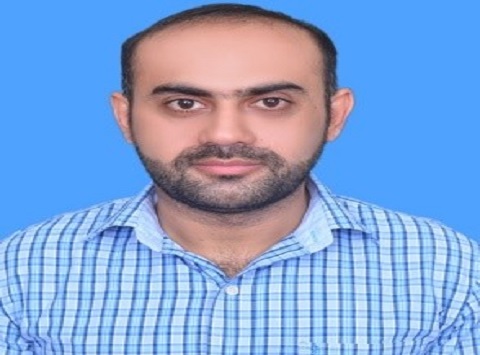
Sajid Asghar
Assistant Professor, Department of Pharmaceutics, Faculty of Pharmaceutical Sciences, Government College University Faisalabad – Pakistan
Dr. Sajid Asghar obtained his PhD (Pharmaceutics) from the China Pharmaceutical University. His PhD work was focused on the design of anticancer nanoparticles for targeted drug delivery. He has been working as a faculty member at Government College University Faisalabad, Pakistan for last 12 years. His research interests include design of various drug delivery systems and their evaluation for improved efficacy of drugs and decreased side effects. He has won research projects for the design of drug loaded lipid nanoparticles, lipid-polymer composites, and microemulsions. He pays special attention to the use of natural components such as proteins, lipids, and polysaccharides as biomaterials and drug carriers. He has published up to 60 papers in peer reviewed journals.
This work presents the development of anisotropic flower like structures formulated using emulsification-solvent evaporation in conjunction with lyophilization. Aim of the present work was to build an anisotropic drug delivery system (ADS) for the encapsulation and enhancement of antifungal activity of a hydrophobic antifungal drug i.e. itraconazole (ITR) with the combination of lipophilic (lipids) as well as hydrophilic (mannitol) materials. Lipids were loaded with drug through solvent evaporation-emulsification to make nanoseeds and these nanoseeds were converted to subsequent anisotropic structures (ADS) through the lyophilization in the presence of mannitol. Encapsulation efficiency (EE) due to glyceryl monosteatrate (G.ADS) was 89.02%, whereas Precirol ATO5 formulation (P.ADS) showed 96.98% EE. FTIR analysis discovered the hydrogen bonding and Vander Waal’s forces between lipids and mannitol, while evaluation of XRD data revealed the detailed structural and microstructural characterization indicating the crystallinity of final formulations. Observation under SEM revealed that the final formulations grew in the form of flower like morphologies. These flower-like structures were more obvious for P.ADS. The increment in dissolution rate (>80% in 6h) could be attributed to the mannitol. Dilutions of ITR loaded anisotropic solid lipid mannitol microstructures (ADS) in water at concentration range of (500µg/mL, 250µg/mL, 125µg/mL and 75µg/mL) exhibited increased antifungal activity, while free ITR dilution in water showed no zone of inhibition. Both formulations, specifically P.ADS could signify a promising drug delivery system for lipophilic antifungal drugs.